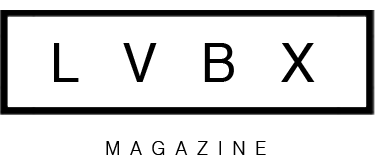
At a recent book signing, one of the audience members said to me, “It’s not that I mind change, it’s just that I hate not knowing what’s going to happen.” That’s right. Despite our calculations and insurances, our opinion polls and predictions, what’s going to happen next is uncertain. Even when we think we know what we know, it’s only ever a guess—an educated guess at best. What we do know is that this next moment will change—only we don’t know how, when, or why. As I’m writing this, I just heard that one of my friends was promoted at her work, today. A change she’d been hoping for. I also heard news that my teenage cousin had three friends who were killed in a car accident this morning. A tragic change nobody wanted.
If we are going to develop greater ChangeAbility, that is, a more flexible response to meeting the changes that come our way, then we need to accept—or at the very least, acknowledge—that our entire human existence is flux: unpredictable and unknowable from one minute to the next.
This is a very difficult idea to hold on to for any length of time. The American Buddhist nun, teacher, and best selling author, Pema Chödrön, writes in her book, Living Beautifully with Uncertainty and Change, “As human beings we share a tendency to scramble for certainty whenever we realize that everything around us is in flux. In difficult times, the stress of trying to find solid ground—something predictable and safe to stand on—seems to intensify. But in truth, the very nature of our existence is forever in flux. Everything keeps changing, whether we’re aware of it or not.”
PATTERNS
Amidst this fluctuating and unknowable world, we do find patterns, tendencies and consistencies; familiar ways that calm and comfort us. As an example: this is my house where I live, these are the neighbors’ cars that park in front of my house, these are the trees and flowers I planted in my yard, this is the time I go off to work, this is the time I return home for the night. I orient myself to these patterns, especially if these patterns are repeated over and over again. Repeated patterns allow me to make assumptions about my environment and my life, freeing up my attention to be placed elsewhere.
DISRUPTION AND DISORIENTATION
The familiarity of routines and satisfied expectations calms me. But enter change, and I no longer will be able to respond from the patterns I have come to know. This can be disconcerting. With the introduction of any change, the patterns become disrupted; my routine can’t continue in the same way. That job promotion has given my friend different responsibilities and a new workspace; a remodel to my house would change where I walk in the front door; my cousin’s friends are gone. Change is always disruptive; it requires that we make shifts and course corrections. Unknown change is disorienting, especially if I am oriented around the status quo.
How do you reorient when you’ve been disrupted? What are the ways that you regain balance, find your “center,” or move in a new direction when your patterns have been interrupted, often by sudden change? Or, how do you reorient when you intentionally disrupt them by electing a surgery, moving to a new city, or finding a new love? How do you find your way back to center, to hope, to normal—or to a new normal—when nothing around you looks or feels familiar?
“Change is always disruptive; it requires that we make shifts and course corrections. Unknown change is disorienting, especially if I am oriented around the status quo.”
DEVELOP A PRACTICE
This is where a practice comes in handy: mediation, exercise, dance, running, yoga, walks in the woods, keeping a daily writing journal, knitting, playing a musical instrument, a weekly meeting with a good friend. You build a regular practice that helps you find center, remain calm, regain equilibrium, and integrate new information from all the small changes that each day brings so that when a large wave of change comes up and upends you, you already have the practice of how to reorient in order to right yourself.
A practice is how we orient to the movement of change within the movement of change, not stopping dead in our tracks in fear and overwhelm when change moves too rapidly or erratically. I’m more adaptive when I can align my own internal movement of change with the larger movements of external change around me, rather than meeting that movement with resistance. The practice of reorienting helps us to make those necessary shifts as they come. I know from experience, it requires much more momentum to get movement going again from a stopped place than from a place of movement, especially if I’m needing to move in a new direction. It’s much easier to ride a bicycle uphill when you’ve built up the momentum than to climb from a stationary beginning at the bottom of the hill.
Certain types of activities can help you in increasing the capacity for variation and authentic response within your system. An effective practice for meeting change might be something that includes working with different contrasts, diverse rhythms and tempos, a sense of play, and by all means, fun; variations that allow you a spectrum of choice and the experience of innovation to meet life’s movement in varied ways, not just more predictable patterned movement. This includes activities that engage physical flexibility, mental playfulness, artful curiosity, novelty, and attention to how I am feeling while I am doing each of these activities.
“A practice is how we orient to the movement of change within the movement of change, not stopping dead in our tracks in fear and overwhelm when change moves too rapidly or erratically.”
YES…AND
An improvisational approach to meeting change has been vital to Jackie Welch Schlicher, performing artist and ceramicist, and a featured contributor on my podcast and in my book, ChangeAbility: How Artists, Activists, and Awakeners Navigate Change. Jackie’s years of experience as a highly skilled, extremely funny improvisational actress has equipped her to translate that approach into her every day life, as well. When change come her way, she responds with “yes…and.” This is her way of accepting the change that has arrived, and then finding where the next place to go with it might be. By being responsive in the moment, she treats a sudden change of dinner plans, a flat tire on the way to an important appointment, or disappointment over a glaze burnt in the kiln the same as the unexpected line or action her scene partner throws at her on stage. “Yes…and” asks us to look for new ways to frame the current situation, and to look for new resources in response.
For anyone who has seen an improv comedy show, it’s not an option for a player to stop the scene if they don’t know how to respond to move the scene forward. Nor is it really an option in life to stop your own action when the scene takes a turn you were not expecting. The nature of life is that your scenes will often turn in ways you were not expecting. “Yes…and” is a good place begin.
Part of this practice of “yes…and” is to recognize what word you habitually use, internally, when meeting change. Is it Yes? No? Oh no!? Hell No!? Or it is Yes…and?
To Jackie, the unexpected and the unknown are exciting. The unexpected brings forward novelty and creativity, which can be exhilarating. The unknown challenges her to take leaps of faith, which can ultimately provide her with lasting trust. Saying “yes…and” and following the impulse of her response leads her into what she calls, “the magic of the unexpected.”
IMAGINATION
Another important practice in living with the unknown is to be able to recognize our imagination, and to be able to distinguish between the creations of our imagination and the accuracy of our perceptions right here, right now. When we gaze into the unknown darkness of what we cannot see ahead, it’s too easy to project our imagined fears or our imagined hopes into that void. Our imagination can be our ally and lift us to new possibilities and considerations. Our imagination can also do us great harm by taking us into our worst fears and convincing us that this is the truth. We might tell ourselves that considering grave outcomes is preparing us, and therefore protecting us, from unseen dangers. We tell ourselves all sorts of things. We tell ourselves stories to somehow calm our uncertainty. I know. I’m a writer. Writers use their imaginations to make up stories to explain the unknown, but the possible future is still, for all intents and purposes, unknown, and perhaps even yet to be formed.
The best way I know how to meet the unknown is by grounding myself in the sensory awareness of what I can know in this very moment. This perspective of using my eyes, ears, nose, taste, touch, and feeling sense to locate myself in this very moment is all I can really know or trust. Though many of the change experts in my book have different names for it; all would agree on calling this felt sense “presence.” Presence is the feeling sense of being still, and at the same time aware and connected within myself and with my surroundings. It is the state of awareness.
How do you find presence? Take a breath. Feel it spiral up through your nostrils and down into your chest. What is the quality of your breath? Is your breath full, constricted, soft, welcome, grasping, ignored? Most people will not trust what they cannot see, feel, or experience in some way with their senses. What did it look like? How did it sound? How did my breath and heartbeat feel within my own chest when I heard it? This is what I can know. This is how I can locate myself, right now. Not in my imagined hopes or fears, not in my plans, expectations, or my agenda for the day, but to feel myself in rapport with myself, with other people, and with my surroundings in a shared resonance of presence and awareness. In this way, what can be known will make itself known to me. My ability to return to this state of presence can be practiced. It can become my reorientation practice, and it will increase my ChangeAbility when the big waves of unknown change come crashing to my shores.
Sharon Weil is the author of ChangeAbility, How Artists, Activists and Awakeners Navigate Change (Archer/Rare Bird Books 2016), a book designed to help readers navigate all the changes of their lives, drawing upon the collective wisdom of twenty-five change-innovators across many fields. She is the author of the novel, Donny and Ursula Save the World, “the funniest book about love, sex, and GMO seeds you’ll ever read.” (Passing 4 Normal Press 2013) She is also the host of Passing 4 Normal Podcast, conversations about change. sharonweilauthor.com









